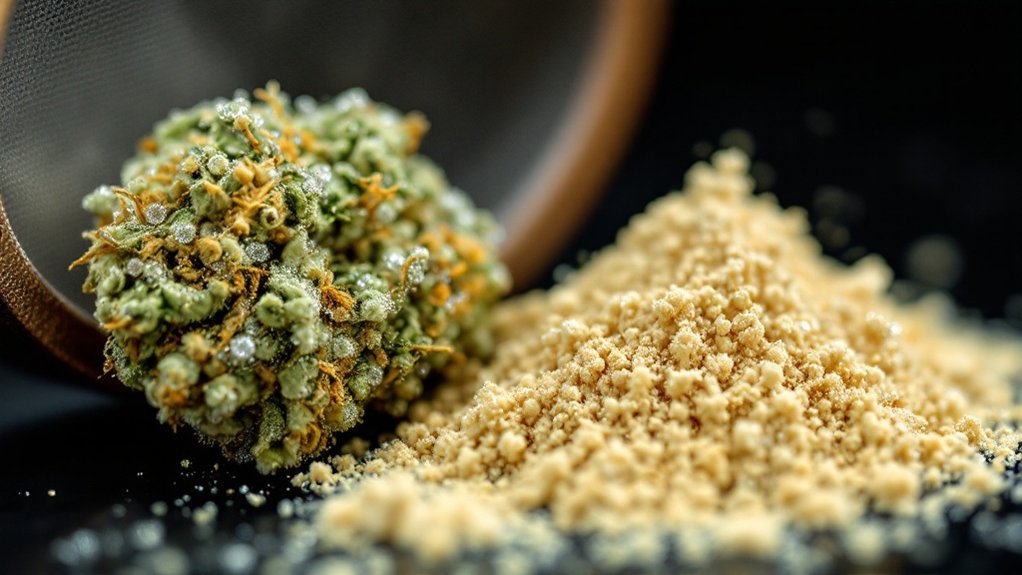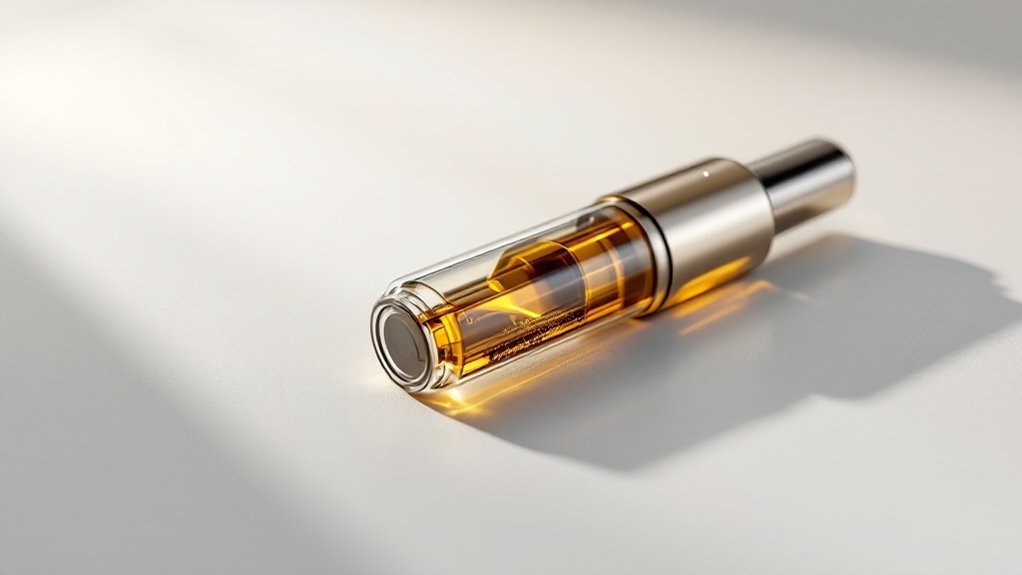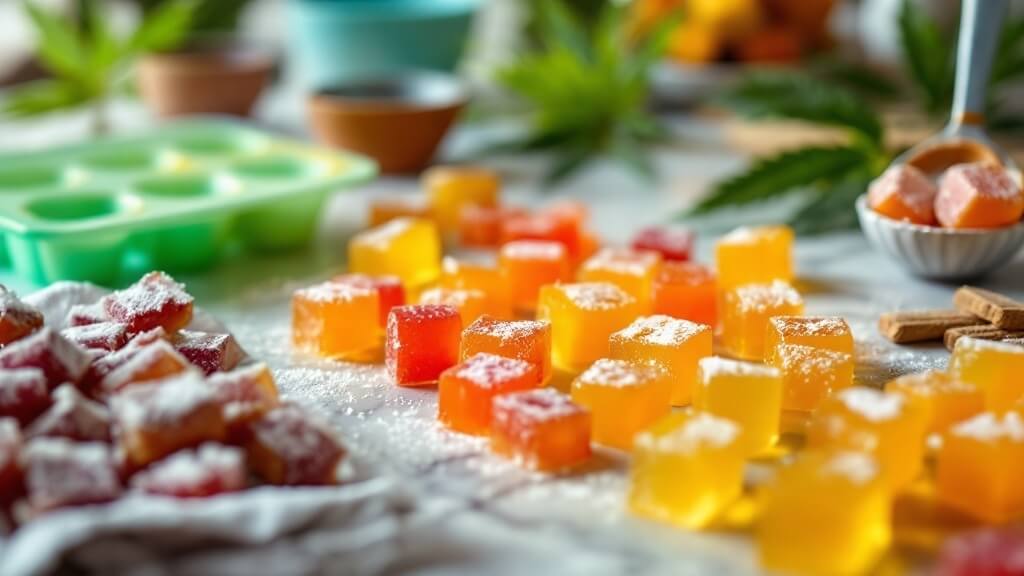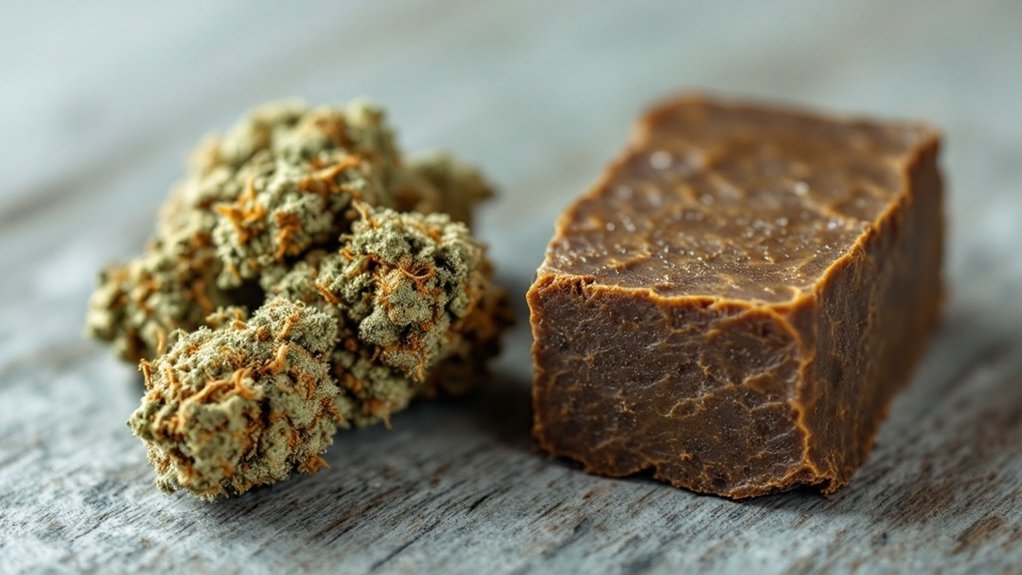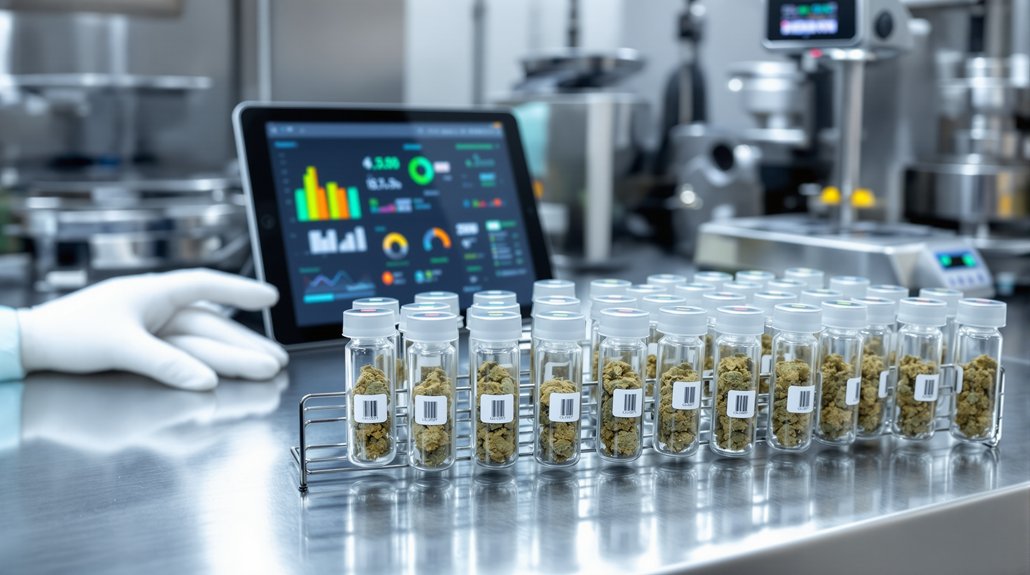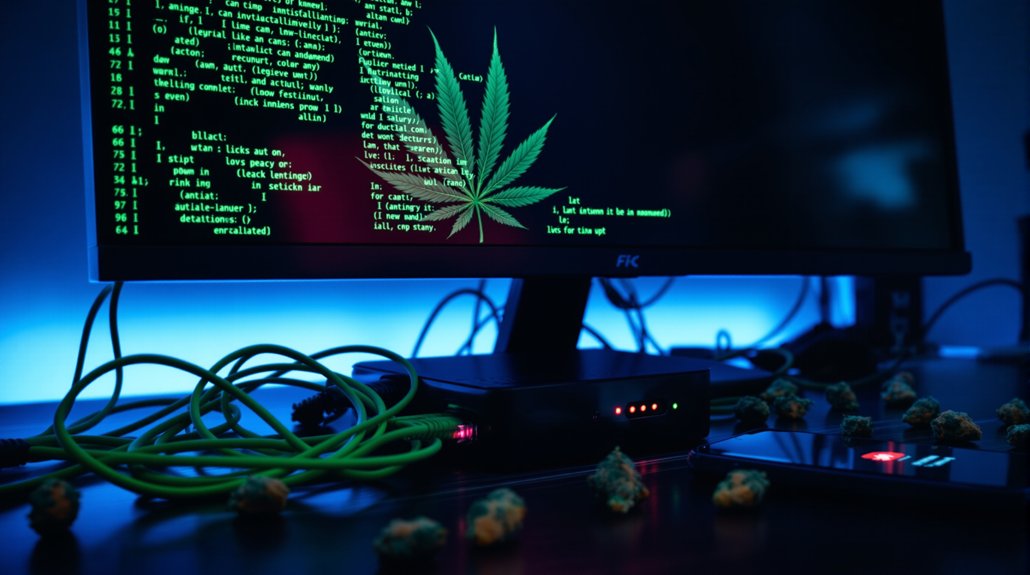Kief is a concentrated cannabis product consisting of trichomes that have detached from the plant material. These microscopic resin glands contain the highest concentration of cannabinoids and terpenes, making kief considerably more potent than regular flower, with THC levels ranging from 50% to 70% on average. Collected through grinding or screen-sifting techniques, this light-colored powder requires no chemical solvents for extraction. The ancient practice of kief collection reveals nature’s most efficient method of cannabinoid concentration.
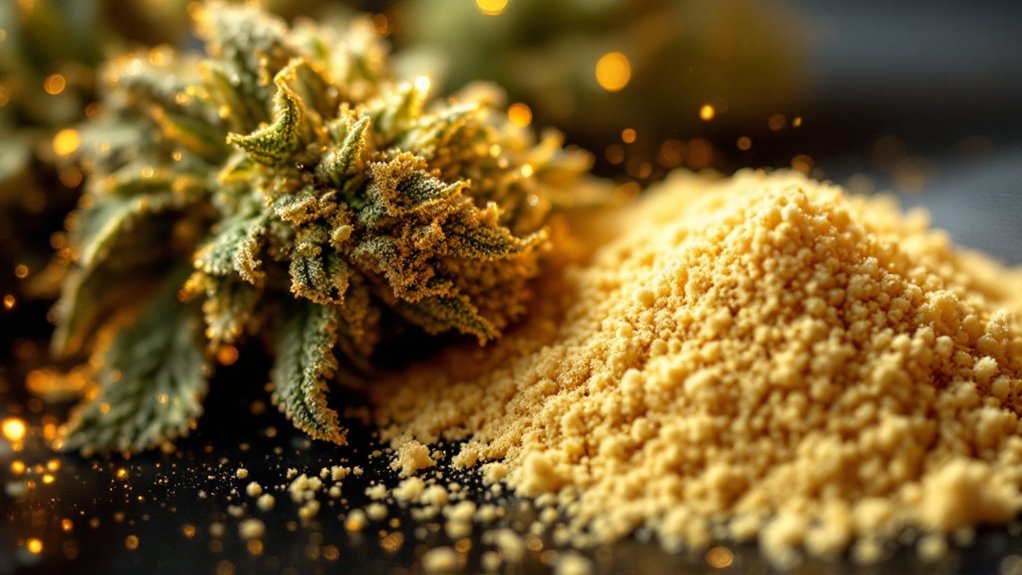
Trichomes, the tiny crystalline structures adorning cannabis flowers, represent one of nature’s most remarkable botanical adaptations. These microscopic resin glands serve as the plant’s natural defense mechanism in the wild, while simultaneously functioning as production centers for the cannabinoids, terpenes, and flavonoids that define each strain’s unique properties.
When separated from the plant material, these trichomes form what is known as kief—a concentrated powder containing considerably higher levels of active compounds than found in standard cannabis flower.
The term “kief” derives from the Arabic word “kayf,” which appropriately translates to pleasure or intoxication. This etymology reflects the historical significance of kief, demonstrating that ancient cannabis cultures recognized the enhanced potency of isolated trichomes long before modern consumption methods emerged.
Alternative names include “dry sift,” “pollen,” or occasionally “keef,” though the proper English spelling remains “kief.”
Collection of this potent substance occurs through several methods, with the most common being the natural accumulation in multi-chamber grinders. As cannabis is ground, the trichomes break away from the plant material and fall through a fine mesh screen, collecting in the bottom chamber as a light blonde or off-white powder.
More deliberate harvesting techniques involve screen-sifting or dry-sieving cannabis to separate the trichome heads from plant matter, yielding approximately one gram of kief per sifting session depending on the quality of starting material.
The scientific significance of kief extends beyond its recreational appeal. These resin glands contain the highest concentration of the plant’s medicinal compounds, making them valuable for understanding a strain’s chemical profile. Additionally, kief can be used to enhance cannabis concentrates, offering users an even more potent experience.
The density and composition of trichomes often serve as indicators of cannabis quality and potency, with lighter-colored kief typically representing purer trichome collections with minimal plant contamination.
When examined microscopically, kief reveals itself as a collection of trichome heads—the bulbous tips of the resin glands where cannabinoid production is most concentrated.
This natural concentrate form requires no chemical solvents for extraction, representing one of the oldest and most straightforward concentration techniques in cannabis culture. The resulting powder offers consumers a noticeably more potent experience than conventional flower, as it contains primarily the most active portions of the plant without the diluting effect of stems, leaves, and other plant materials. With THC levels ranging from 20% to 60%, kief provides significantly more potent effects than traditional cannabis flowers. In traditional Moroccan culture, kief is often mixed with indigenous tobacco to create a distinctive blend that is smoked in a long pipe called a sebsi.
Frequently Asked Questions
How Long Does Kief Stay Potent When Stored Properly?
Properly stored kief maintains ideal potency for approximately six months to one year.
When isolated from environmental factors such as light, heat, air, and moisture, its shelf life can extend to several years, though noticeable THC degradation occurs after the first year.
Storage conditions greatly impact longevity, with airtight glass containers kept in cool, dark locations below room temperature and at low humidity (under 62%) providing the best preservation of cannabinoids and terpenes.
Can Kief Be Used in Edibles Without Decarboxylation?
Kief can technically be used in edibles without decarboxylation, but its psychoactive effects will be greatly diminished.
Raw kief contains primarily THCA rather than THC, and without the heat-activated conversion process, consumers will not experience the typical “high” associated with cannabis edibles.
While THCA may offer some therapeutic benefits, the potency of edibles made with non-decarboxylated kief is considerably lower than those where the kief has undergone proper heat treatment.
What’s the THC Percentage Difference Between Flower and Kief?
Kief contains considerably higher THC concentrations than cannabis flower, with typical ranges showing a marked difference.
While cannabis flower generally contains 15-30% THC, kief typically contains 50-70% THC and can reach up to 80% in premium samples.
This substantial difference in potency occurs because kief consists primarily of concentrated trichomes, which house the plant’s cannabinoids, whereas flower includes substantial plant material that dilutes the overall THC percentage.
Are Specialized Grinders Worth the Investment for Collecting Kief?
Specialized grinders represent a worthwhile investment for kief collection due to their significant advantages over standard models.
With multi-chamber designs and fine mesh screens, these grinders systematically separate trichomes from plant material, delivering superior yield and purity.
The built-in kief catchers collect potent material automatically during regular use, eliminating the need for separate sifting equipment.
Though initially more expensive, specialized grinders provide long-term value through increased efficiency and higher-quality kief production.
Can You Press Kief Into Hash Without Special Equipment?
Pressing kief into hash without special equipment is entirely possible using several household methods.
Individuals can employ parchment paper folding techniques, combined with manual pressure and body heat to transform loose kief into cohesive hash.
Alternative approaches include using books or other heavy objects for sustained pressure, warm water bottles for gentle heating, or a rolling pin to apply even compression.
The quality of homemade hash depends primarily on the trichome content of the starting kief and consistency of applied pressure.
